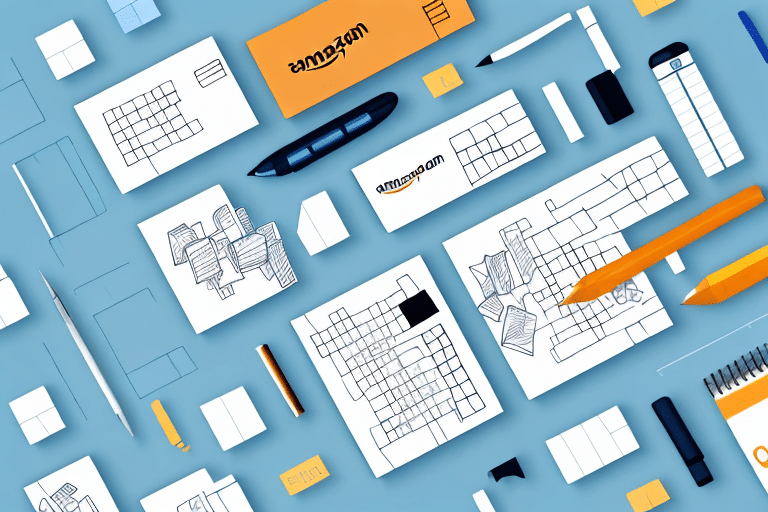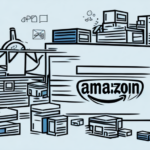How Much Does FBA Cost? A Comprehensive Guide to Amazon FBA Fees
If you are considering using Amazon's FBA program, understanding the costs involved is crucial. FBA, or Fulfillment by Amazon, is a popular service that allows sellers to store their products in Amazon's warehouses and have them shipped directly to customers. While it offers convenience and potential cost-effectiveness, comprehending the various fees is essential before deciding if it's the right choice for your business. This article provides a comprehensive guide to Amazon FBA fees, helping you determine the best fulfillment strategy for your needs.
Understanding the Different Types of Fees Involved in FBA
Before diving into specific FBA costs, it's important to grasp the different types of fees Amazon charges. Amazon imposes fees for storing, packaging, and shipping products, which can vary based on factors like product size, weight, seasonality, and more. Here, we break down the primary fees associated with using FBA.
Storage Fees
Storage fees are based on the amount of space your products occupy in Amazon's fulfillment centers. These fees increase the longer your inventory remains stored, making inventory management crucial to avoid unnecessary charges. Monthly storage fees are calculated per cubic foot and differ between standard and peak seasons.
Fulfillment Fees
Fulfillment fees cover the cost of picking, packing, and shipping your products to customers. These fees are determined by the size and weight of your items, as well as the shipping destination. Accurately factoring in fulfillment fees when setting your product prices ensures profitability after all costs are considered.
Additional Fees
- Long-term Storage Fees: Charged for products stored in Amazon's warehouses for over 365 days.
- Referral Fees: A percentage of each sale, varying by product category.
- Unplanned Service Fees: Incurred if products require extra handling or do not meet Amazon’s preparation requirements.
Understanding these fees is essential for effective cost management in your FBA strategy.
Fulfillment Fees: What Are They and How Are They Calculated?
The fulfillment fee is one of the most significant costs in the FBA program. It covers the expenses associated with packing and shipping orders to customers. Fulfillment fees vary based on product size and weight, with different rates for standard-sized and oversized items. During peak seasons, such as the holidays, these fees might be higher due to increased demand.
For detailed and up-to-date information on fulfillment fees, refer to Amazon's official FBA Fulfillment Fees.
Storage Fees: How Much Do You Need to Pay to Store Your Products in Amazon Warehouses?
Amazon charges monthly storage fees based on the volume your products occupy in their warehouses. Fees are generally higher during peak seasons (October through December) to account for increased storage demand.
- Standard Storage Rates: Vary by size and time of year.
- Long-term Storage Fees: Applied to items stored for over a year, adding to the monthly storage charges.
To minimize storage fees, regularly monitor your inventory levels and remove slow-moving or unsold products. For more details, consult Amazon's Storage Fees documentation.
Referral Fees: A Breakdown of Amazon's Commission Structure
Referral fees are a percentage of the total sales price of each product sold on Amazon. These fees vary depending on the product category. For instance, books might have a different referral fee percentage compared to electronics.
It's crucial to familiarize yourself with the referral fee structure to accurately calculate your potential earnings. To explore the detailed referral fee percentages per category, visit Amazon's Referral Fees page.
Long-term Storage Fees: When and How Are They Charged?
Long-term storage fees apply to items stored in Amazon’s fulfillment centers for more than 365 days. These fees are in addition to the standard monthly storage fees and are calculated based on the volume of your inventory.
To avoid incurring long-term storage fees, it's advisable to manage your inventory effectively, removing or discounting slow-moving items. Utilize Amazon’s Inventory Age and Health Reports to identify products at risk of accruing long-term storage fees.
FBA vs FBM: Which is More Cost-effective for Your Business?
When selling on Amazon, you can choose between two primary fulfillment models: FBA (Fulfillment by Amazon) and FBM (Fulfillment by Merchant). Each has its own set of advantages and potential costs.
Fulfillment by Amazon (FBA)
- Pros: Access to Amazon Prime customers, potential for higher sales volume, Amazon handles shipping, returns, and customer service.
- Cons: Fees for storage and fulfillment can add up, less control over inventory and packaging.
Fulfillment by Merchant (FBM)
- Pros: More control over the fulfillment process, potential cost savings on storage fees, ability to personalize packaging and customer experience.
- Cons: Requires more time and resources to handle shipping and customer service, not eligible for Amazon Prime.
Choosing between FBA and FBM depends on your business size, sales volume, and fulfillment capabilities. For small businesses or those with niche products, FBM might be more cost-effective, while larger sellers with high sales volumes may benefit more from FBA's scalable infrastructure.
Impact of Product Size and Weight on FBA Costs
The size and weight of your products significantly affect FBA costs. Fulfillment fees increase with larger and heavier items, and they also impact storage fees due to the space they occupy in Amazon's warehouses.
For example, oversized items like furniture or large appliances may incur higher fees than standard-sized products. Additionally, products requiring special packaging or assembly can lead to additional costs.
To optimize FBA costs, consider:
- Optimizing product dimensions to fit standard-sized categories.
- Reducing product weight where possible.
- Efficient packaging designs to minimize space usage.
For current FBA pricing based on size and weight, refer to Amazon’s FBA Pricing page.
How to Reduce FBA Costs Without Compromising on Customer Experience
While FBA fees can be substantial, several strategies can help reduce these costs without negatively impacting the customer experience:
- Optimize Product Dimensions and Weight: Streamline your products to fit into lower-cost categories.
- Inventory Management: Regularly review inventory levels to prevent overstocking and reduce storage fees.
- Use Amazon’s Multi-Channel Fulfillment: Spread FBA costs across multiple sales channels, increasing cost-effectiveness.
- Leverage Amazon’s Packaging Services: Utilize Amazon’s in-house packaging to reduce prep fees and ensure packaging efficiency.
Additionally, consider scheduling inventory shipments proactively around peak seasons to manage costs better.
Tips for Calculating Your FBA Fees Accurately
Accurate calculation of FBA fees is essential to ensure profitability. Here are some tips:
- Understand the Fee Structure: Familiarize yourself with all applicable fees, including storage, fulfillment, and additional charges.
- Factor in Volume: Calculate fees based on product dimensions, weight, and storage space required.
- Consider Seasonality: Higher storage fees during peak seasons should be accounted for in your financial planning.
- Use Amazon’s FBA Calculator: Utilize available tools like the Amazon FBA Calculator to estimate fees accurately.
Regularly reviewing and updating your fee calculations helps maintain accurate pricing and profitability.
Hidden Costs to Watch Out for When Using FBA
While Amazon's FBA pricing is generally transparent, there are hidden costs that sellers should be aware of:
- Return Processing Fees: Fees applied when handling returned items.
- Unplanned Service Fees: Extra fees for items not properly prepared or labeled according to Amazon’s requirements.
- Removal and Disposal Fees: Costs associated with removing or disposing of unsold inventory.
- Hazardous Material Fees: Additional charges for products classified as hazardous materials.
Being aware of these potential costs can help you better manage your FBA expenses. For a complete list, refer to Amazon’s FBA Fee Schedule.
Comparing FBA Fees with Other Third-Party Logistics Providers
Exploring alternative third-party logistics (3PL) providers can help you determine if FBA is the most cost-effective option for your business. Other 3PL providers might offer more customized solutions, flexible pricing structures, and specialized services that better align with your business needs.
When comparing FBA with other 3PL options, consider factors such as:
- Pricing structure and total costs.
- Service levels and fulfillment speed.
- Integration capabilities with your sales channels.
- Customer service and support.
Conduct a thorough cost-benefit analysis to identify the best fulfillment strategy for your business. Resources like Entrepreneur's guide to 3PL providers can provide further insights.
Negotiating Better Rates with Amazon as an Established Seller
If you’re an established seller with significant sales volumes, you might be eligible to negotiate better rates with Amazon. Amazon offers tiered pricing based on sales performance, allowing high-volume sellers to benefit from reduced fees.
To take advantage of tiered pricing:
- Maintain high sales volumes consistently.
- Ensure excellent performance metrics, such as low return rates and high customer satisfaction.
- Contact Amazon Seller Support to inquire about eligibility for tiered pricing.
Building a strong sales history and maintaining high standards can increase your chances of securing more favorable FBA fees.
The Impact of Seasonal Demand on FBA Fees
Seasonal demand fluctuations, particularly during peak periods like the holidays, can significantly impact FBA fees. During these times, storage and fulfillment fees may increase due to higher volume and demand for storage space.
To manage seasonal cost increases:
- Plan Inventory Levels: Adjust your inventory shipments based on anticipated seasonal demand.
- Monitor Fees: Stay informed about Amazon's fee changes during peak seasons.
- Optimize Fulfillment: Ensure efficient packing and shipment processes to minimize costs.
Proper planning and proactive inventory management can help mitigate the impact of seasonal fee increases.
Conclusion: Is Amazon's FBA Program Worth the Investment for Sellers?
After exploring the various fees and costs associated with Amazon's FBA program, it's evident that while FBA can represent a significant investment, it also offers substantial benefits. The convenience of Amazon's fulfillment network, access to Prime customers, and potential for increased sales volume can justify the costs for many businesses. However, it's essential to thoroughly analyze your business needs, cost structure, and pricing strategy to determine if FBA aligns with your goals.
Consider experimenting with FBA on select products to gauge its impact on your operations and profitability before fully committing. With careful management and strategic planning, Amazon's FBA program can be a valuable asset in scaling your business.






















